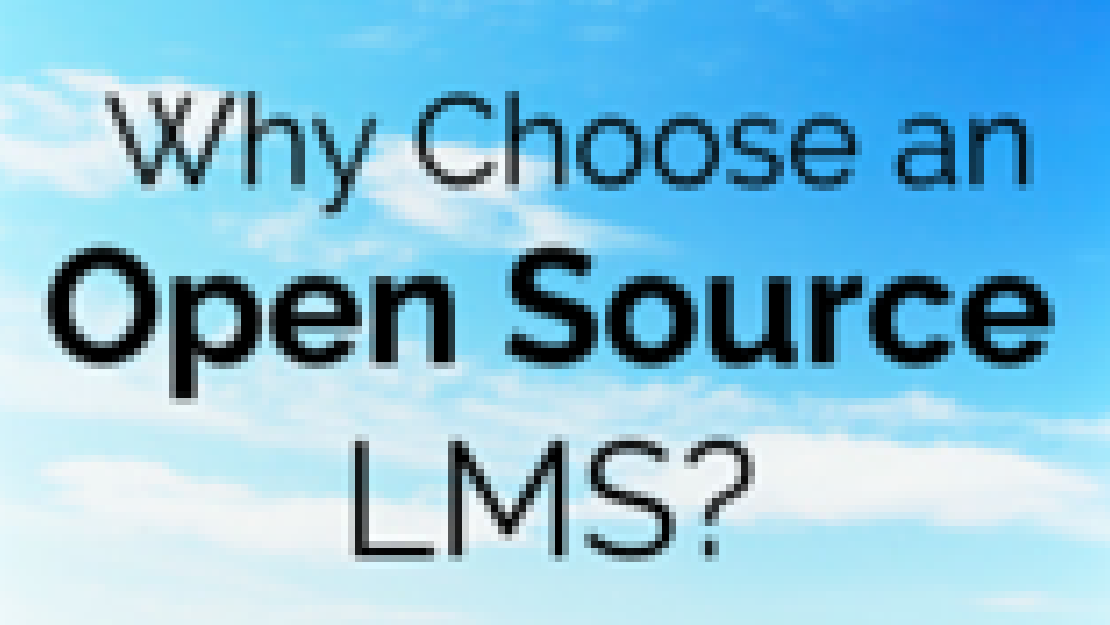Intro to open source
What is open source? In essence, it means that you are able to edit the source code as much as you want. You have control over the code, and can change it to fit your particular needs. This gives you unlimited freedom, provided you know what you’re doing.
Is open source free? Many open source solutions are completely free, while others offer a free license but have a small charge for support or other services, and some open source solution providers charge a small licensing fee. Essentially, open source isn’t necessarily “no cost”, but it is free in the sense that you are free to do what you want with the source code.
On the other hand, proprietary software means you are not allowed to make changes to or even access the code. In some cases the software might be free and may charge for support or upgraded versions, a sort of “freemium” package, but in most they have licensing fees just to install the software.
LMS Features
So if you can get some open source solutions for free and proprietary software has licensing fees, why would you ever buy proprietary? For the most part, proprietary software has many more features available out of the box. LMS vendors spend millions of dollars trying to make their LMS the best on the market. All that money being invested needs to be earned back via subscriptions from you the customer. With open source you get all the basic functionality and all those extras can be installed as plugins. Plugins are created by a community of users so there is no need to charge subscriptions to support the cost of development. For example, Totara has over a thousand plugins available to easily enhance your LMS, and you only need to install the ones you need.
Cherry-picking the functionality you need by choosing appropriate plugins can often make the LMS more streamlined.
Let’s say you are trying to setup an ecommerce site to sell some great online courses you are developing. Does it matter that they have great modules to track face to face training, or have performance appraisals or talent management? What if your focus is training internal employees – do you need all of the different ecommerce features? Maybe the way they designed the registration process doesn’t fit the way you want your site to work; too bad, that’s the way it is because their top clients want it like that. Is there a feature you really do like? Guess what – it is getting an overhaul next month to meet the needs of the majority of clients that don’t use the system the way you do and you will need to rethink how you use the system.
This is why open source always wins in my book. In most cases, the system is free and does not have per-user license costs. It doesn’t have all the features a proprietary system has out of the box, but since it is open source that is easy to change by installing plugins or creating new features. You have the ability to make the system do exactly what you want. You only pay for the development you need – not all the extra bells and whistles you are never going to use.
There is also typically a community of users making changes to the system, who share their new features for you to download and add to the system.
Not a programmer? Not sure where to start? Not a problem. This is where Webanywhere comes in – we can take that out of the box open source software and make it do exactly what you need it to with our bespoke development services.
Stability
What happens when your LMS vendor goes belly up? What if you are not getting the customer service you deserve and pay for? Well, with proprietary software you are out of luck – it is now time to do a costly migration to another LMS.
With open source, all you need to do is pick up the phone and call another development firm to come in and help you out, and they can pick up right where you left off. One word of warning is when selecting a company to work on your open source software, make sure that they are developing plugins for you and are not changing the core code of the software. If the core code is being changed then you will have a hard time switching vendors and you will not be able to upgrade the base software without having to redo all those changes again.
In my experience, there are only a few rare cases where you need to change the core code and they come with a good amount of warning and sign offs before I would even consider it.
Price
Some people think that doing software development will be too costly and it will be cheaper to go with proprietary software. This might be true in year one, maybe even year two, but after that you should see the savings that come rolling in.
A typical LMS can cost between $20-$50 per user per year. The $20 ones will not meet all your needs and the $50 ones will have so many extras you don’t need it makes your head spin. Say you have 1,000 staff that you will be training, that is an annual cost of $20,000 – $50,000. For the same price as your year 1 subscription you can get a custom designed, open source LMS to meet your needs and that works the way you want it to.
Since there are no user license fees in the years to follow, you will be saving all that money you would have been throwing away on your proprietary subscription. Just imagine – if you have 10,000 users – how much you will save. We have created LMS solutions that host up to 1.4 million users; I don’t even want to think what a proprietary LMS would have cost for that one!
Summary
So why choose an open source LMS? With all of the above in mind, why would you ever go with a proprietary LMS if you are a large organization looking to minimize cost and future-proof your learning platform?
If you have less than a hundred users, it is probably more cost effective to go with an off the shelf solution. Compare prices and see for yourself – just keep in mind what will happen in year two and beyond. Maybe you have a short term training need. If you only need the LMS for a few months it is not worth building your own.
I have yet to see a convincing reason to go with a proprietary LMS over Open Source besides those two, but if you have one please give me a call or email, I would love to hear about it!
Related Webanywhere Pages
Our Workplace Learning Solutions – helping you make the most of the latest open source software to transform learning and development in your organization.
Further Reading
An open source definition – detailed by the Open Source Initiative.

